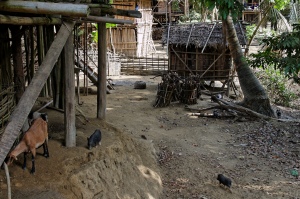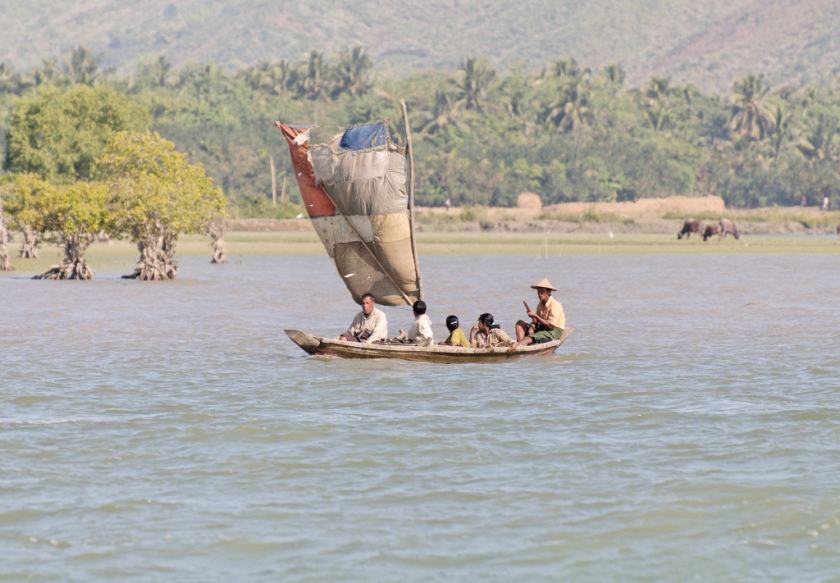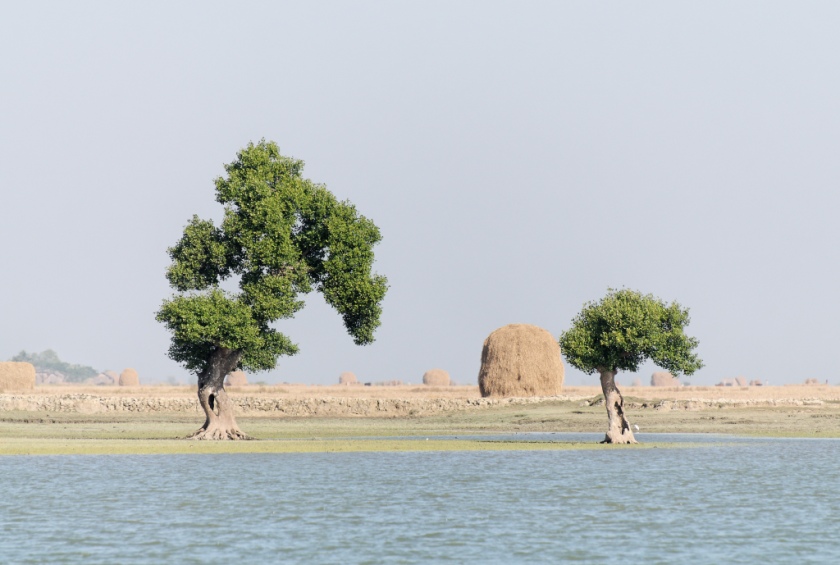We made a long trek to reach the Chin State. We had a day pass (tourists are not allowed to remain overnight in the Chin territory) and a guide to translate for us. Our hope was to reach the villages where the local tribes still have elders with tattoos, by tradition only the women. The government represses the tradition, and it was feared that it had died out.
We had no guarantees that the women would come out to meet us once we reached the villages. At some point in the journey I stopped caring, because every minute in Burma was filled with wonders. The long slow passage upriver had become a journey to a some where, a some thing else. We chugged slowly upriver in NW Burma on the Lemro, from the Rakhine to the Chin state.

After walking around for some time in the first village, the elders stood before us! It was literally as if we looked up, and there they suddenly were.
We asked through our guide if Uwe might take photos. The elder women calmly answered in the affirmative. They were, after all, the reason we’d come so far to visit. The tribes are self-sufficient and produce nothing for the tourist market. To meet the female elders is the reason why foreigners come to the villages.
We were meeting Laytu Chin women (also called Lemro or Laito). The Chin are of Tibetan-Burman ethnicity, and tattooing is practiced only among the southern Chin.
To a woman they were calm, poised, and radiated confidence. When did the Chin begin tattooing? One claim is that the tattooing was done to make the women ugly so the Burmese kings would stop stealing them to use as slaves, but this claim has been discounted as myth. It’s our modern world that sees tattooing as unattractive and labels it ‘ugly’. It’s far more likely that the Chin women were tattooed in a rite of passage, and that the facial tattoos are a mark of social status and coming of age. The tattoos make the women beautiful.
No one in the outside world knows just what these patterns signify. The tattoos may be stippling, dots, circles. The Laytu women we met have the most elaborate Chin tattoo, a spider web or rising sun pattern. Our guide told us the men had gathered the materials used in the tattooing process. Jens Uwe Parkitny reports being told that the actual tatooing is done by female tatoo artists.
The women walked us through the village, up to the school. It was originally funded by a foreigner and we were invited to make a donation. It was all very formal: the guide wrote out a receipt along with the amount, our names, and our nationalities.
One of the women was in charge of taking the money and handling the donation, but the task is rotated. He translated our questions, explaining that on each day a different woman takes on this task. The responsibility of supporting the village is shared communally.
On that day we were invited up into a home on stilts. In another Chin village we watched one of the old women work at a handloom. We visited a burial ground on the river banks, where the dead are cremated and offerings are set out for the deceased. When we finally set back down the Lemro River on that December 31st, the last day of the year 2009, Uwe and I knew we had journeyed a very far way indeed.
Once we were home in Europe I found myself haunted by the old women’s faces. We got online and began to search for anything we could find on the Chin.
We discovered that the tradition of tattooing hasn’t died out altogether after all. In his exquisite brochure “Im Porträt: Gesichtstatuierungen der Chin-Frauen in Birma” (“Chin Women of Burma and their Facial Tattoos: A Portrait”), photographer Jens Uwe Parkitny documents the Chin tribes and different tattoo patterns of each group. He has made it his on-going mission to document and bear witness to this extraordinary group of people and their traditions. The text is in German and English. This stunning booklet of photographs can be ordered from either of the following sites:
Munich Museum of Ethnology: https://www.museum-fuenf-kontinente.de/museum/bibliothek.html
When Uwe and I discovered Parkitny’s brochure on the Munich museum website, we ordered it immediately. Parkitny has also published a new book entitled Blood Faces. All proceeds from his book go to a children’s charity in Yangon, Burma.
In 2017 he published another book of photographs entitled Marked For Life. Kerber Publishers: /www.kerberverlag.com
NOTES: © Jadi Campbell 2013. All photos © Uwe Hartmann.
Click here for my author page to learn more about me and purchase my books.



















